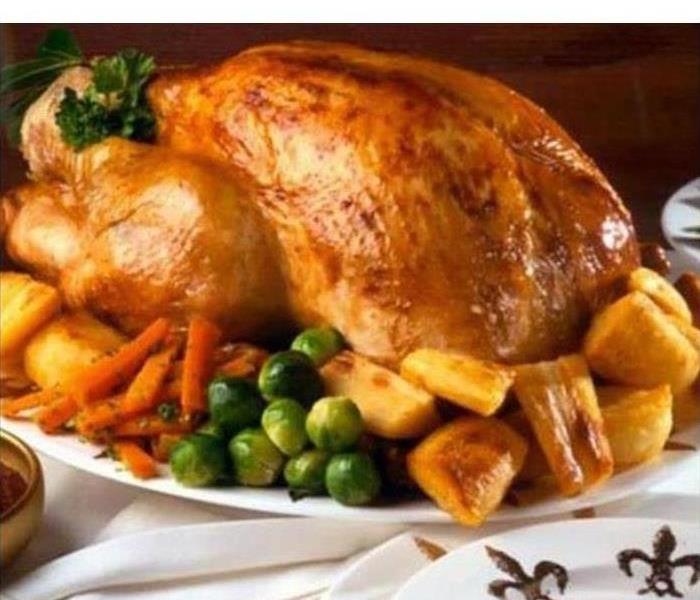Thanksgiving Fire Safety
11/18/2018 (Permalink)
Tips to Cooking Safely this Thanksgiving!
Millions of people are starting to get ready for the Thanksgiving holiday. It's a great time to spend with family and friends, and is also a time when cooks spend a lot of time in the kitchen. Below are a few tips from our partners at the American Red Cross so you can use to avoid a cooking fire while whipping up Thanksgiving dinner.
Thanksgiving by the numbers
- Thanksgiving is the peak day for home cooking fires, followed by Christmas Day and Christmas Eve.
- In 2015, U.S. fire departments responded to an estimated 1,760 home cooking fires on Thanksgiving, the peak day for such fires.
- Unattended cooking was by far the leading contributing factor in cooking fires and fire deaths.
- Cooking equipment was involved in almost half (48%) of all reported home fires and civilian and tied with heating equipment for the second leading cause of home fire deaths.
COOKING SAFETY Cooks should avoid wearing loose clothing or dangling sleeves while preparing the holiday meal. Never leave the stove unattended – if the cook has to leave the kitchen even for a short time, they should turn off the stove. More cooking safety steps are:
• Check food regularly.
• Use a timer as a reminder that the stove or oven is on.
• Keep children and pets away from the cooking area.
• Keep anything that can catch fire - pot holders, oven mitts, wooden utensils, paper or plastic bags, food packaging, and towels or curtains—away from the stove, oven or any other appliance in the kitchen that generates heat.
• Clean cooking surfaces on a regular basis to prevent grease buildup.
• Consider purchasing a fire extinguisher to keep in the kitchen.
• Always check the kitchen before going to bed or leaving the home to make sure all stoves, ovens, and small appliances are turned off.
From all of us at SERVPRO of Eastern Niagara County, we wish you a very Happy and Healthy Thanksgiving!
Source: http://www.redcross.org/news/article/Thanksgiving-Safety-Tips
Source: NFPA's Fire Analysis & Research Division






 24/7 Emergency Service
24/7 Emergency Service
